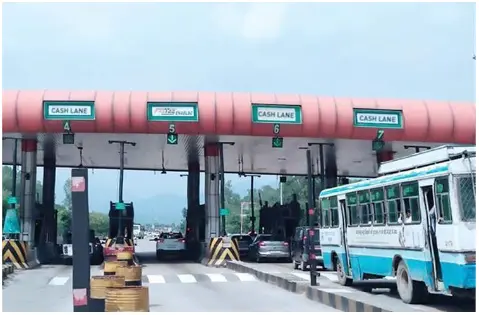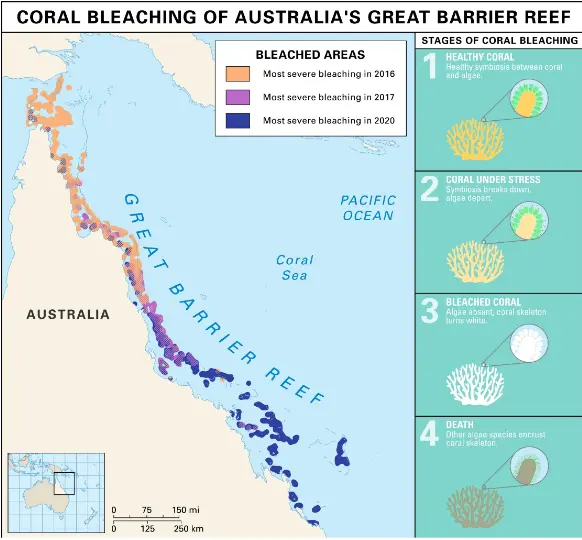Monday, 18th March 2024
Jan Aushadhi Kendras' Credit Support Initiative
In News: The Union Minister for Chemicals & Fertilizers and Health & Family Welfare launched a credit assistance program for Jan Aushadhi Kendras (JAK) to improve access to affordable medicines nationwide.
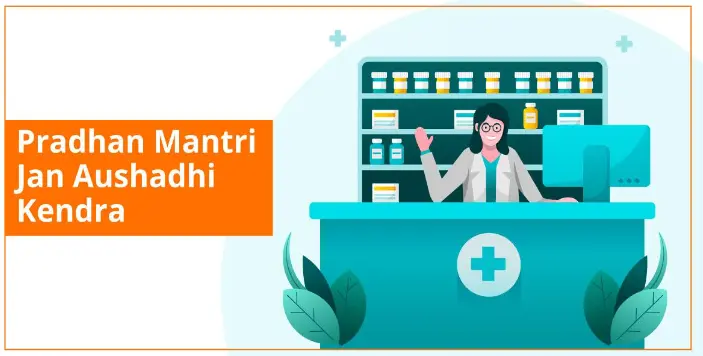
Expanding Access to Affordable Medicines through Jan Aushadhi Kendras
Credit Assistance Program Overview
- The Government of India offers credit/loan assistance to operators/entrepreneurs managing Jan Aushadhi Kendras nationwide.
- Utilizes Goods and Services Tax (GST) and India's Digital Public Infrastructure (DPI) for unsecured working capital loans.
- Provides unsecured working capital loans and infrastructure funding to establish and maintain Jan Aushadhi Kendras.
Empowering Healthcare Entrepreneurs
- Small entrepreneurs benefit from access to credit support, enhancing their ability to run Jan Aushadhi Kendras effectively.
- Aims to strengthen the healthcare ecosystem by ensuring the availability of affordable medicines.
Jan Aushadhi Kendras (JAKs) Essentials
- Government initiative under the Pradhan Mantri Bhartiya Janaushadhi Pariyojana (PMBJP) scheme.
- Offers generic medicines at significantly lower prices, reducing healthcare costs for the public.
- Provides equivalent quality and efficacy to branded drugs, promoting rational medicine use.
Impact and Benefits
- Substantial reduction in healthcare costs, saving Indian citizens over Rs. 28,000 crores in the past decade.
- Enhanced accessibility, with 10 to 12 lakh people visiting JAKs daily.
- Promotes rational medicine use through information and counselling services.
Expansion Goals
- Significant growth from 80 Jan Aushadhi Kendras in 2014 to approximately 11,000 units nationwide.
- Government targets to expand Jan Aushadhi Kendras to 25,000 in the next two years, further improving access to affordable medicines.
|
UPSC Previous Year Questions Mains (2019) Q.1 How is the Government of India protecting traditional knowledge of medicine from patenting by pharmaceutical companies? Mains (2015) Q.2 Public health system has limitations in providing universal health coverage. Do you think that private sector could help in bridging the gap? What other viable alternatives would you suggest? |
Source: PIB
ECI Unveils Lok Sabha Election 2024 Schedule
In News: The Election Commission of India (ECI) initiated the world’s largest election, scheduling the 18th Lok Sabha elections across 7 phases from April 19 to June 1, with vote counting on June 4.
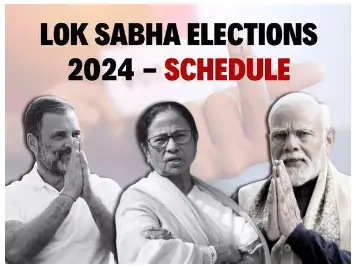
Announcement of 2024 Lok Sabha Election Schedule
- Extended Duration of Election Process
- Stretching over 81 days, compared to 75 days in the 2019 Lok Sabha elections.
- Simultaneous Assembly Elections
- Schedule also includes Andhra Pradesh, Arunachal Pradesh, Odisha, and Sikkim Assembly elections, aligning with Lok Sabha polling dates.
- Bye-elections
- Bye-elections announced for 26 Assembly seats across various states.
- Jammu & Kashmir Assembly Elections
- Despite requests from all political parties, simultaneous Assembly elections with Lok Sabha not feasible due to administrative reasons.
- Candidates in J&K to receive individual security measures due to security concerns.
- Voter Demographics and Logistics
- 96.8 crore eligible voters, including 1.8 crore first-time voters aged 18-19 and 19.74 crore voters aged 20-29.
- Increase in polling stations to 10.48 lakh, involving 1.5 crore officials, 55 lakh EVMs, and 4 lakh vehicles.
Challenges Faced by ECI and Mitigation Measures
- Challenges include muscle, money, misinformation, and MCC violations.
- Seven-phase election schedule influenced by historical, geographic, and climatic factors.
- Establishment of 24/7 integrated control rooms and webcasting in sensitive booths.
- Drone-based monitoring in border areas.
- ECI emphasizes zero tolerance for MCC violations.
Reasons for Election Extension into June
- Unprecedented delay of 6 days in poll announcement compared to 2019.
- Scheduling considerations to avoid clashes with festivals like Holi, Tamil New Year, Bihu, and Baisakhi in March and April.
- Delay attributed partly to the abrupt resignation of Election Commissioner Arun Goel and subsequent appointments to ensure a full Commission for the crucial Lok Sabha elections.
Source: IE
NITI for States Platform
In News: The Union Minister of Electronics & Information Technology launched the 'NITI for States' platform, a digital initiative to empower states and UTs in achieving national development goals.

NITI Aayog's Development Initiatives and Platforms
NITI for States Platform
- Developed by NITI Aayog, it serves as a centralized repository integrating data across states.
- Encompasses 10 sectors and two cross-cutting themes for informed decision-making by state governments.
- Features real-time data updates, multilingual accessibility, capacity building initiatives, expert help desk, and data integration from NDAP.
Viksit Bharat Strategy Room
- An interactive space enabling visualization of data, trends, and policies.
- Allows voice-enabled AI interaction and connects stakeholders through video conferencing.
- Designed for replication at various administrative levels.
NITI Aayog's Development Initiatives
- Development Support Services for States (DSSS)
- Assists states in project planning, financing, and infrastructure implementation.
- Promotes Public-Private Partnerships (PPPs) for broader development goals.
- Aspirational Districts Programme (ADP)
- Targets transformation in 112 under-developed districts.
- Focuses on improving education, health, nutrition, and infrastructure metrics.
- Composite Water Management Index (CWMI)
- Provides insights into water sector status and management performance.
- SDG India Index
- Tracks progress towards UN Sustainable Development Goals.
- Facilitates collaborative action by identifying focus areas.
- Sustainable Action for Transforming Human Capital (SATH)
- Identifies and develops 'role model' states in school education.
- Atal Innovation Mission (AIM)
- Promotes innovation and entrepreneurship across educational levels and industries.
- Collaborated with Meta to launch Frontier Technology Labs (FTLs) in schools, advancing frontier technologies like AI, AR/VR, Blockchain, and IoT.
|
UPSC Previous Year Questions Prelims (2019) Q. Atal Innovation Mission is set up under the (a) Department of Science and Technology Ans: (c) Prelims (2015) Q. The Government of India has established NITI Aayog to replace the (a) Human Rights Commission Ans: (d) |
Source: PIB
India Successfully Test Fires Agni-V Ballistic Missile
In News: Prime Minister Modi declared on March 11 the triumph of a flight test for an Agni V ballistic missile equipped with Multiple Independently Targetable Re-entry Vehicle (MIRV) technology.
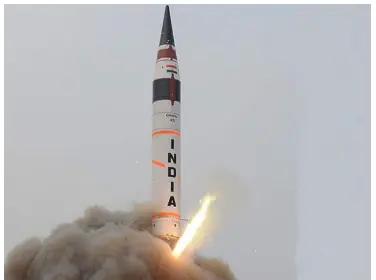
Evolution of India's Missile Technology
- Pre-Independence Rocket Warfare
- Various Indian kingdoms employed rockets in warfare, notably by Mysore ruler Hyder Ali and his son Tipu Sultan.
- Post-Independence Developments
- Establishment of Special Weapon Development Team in 1958, later evolved into Defence Research and Development Laboratory (DRDL) in 1961, now part of DRDO.
- Initiation of Project Devil in 1972, laying the foundation for Integrated Guided Missiles Development Programme (IGMDP).
- Integrated Guided Missiles Development Programme (IGMDP)
- Launched in 1982–83, led by Dr APJ Abdul Kalam, concluded in 2008 after successful development of strategic missiles.
- Nodal agencies: DRDO and Ordnance Factories Board.
- Notable missiles developed under IGMDP: Prithvi, Trishul, Nag, Akash, and Agni series.
- Agni Ballistic Missile System
- Developed under IGMDP, Agni missiles are nuclear-capable ballistic missile systems.
- Range variants: Agni-I (700-800 Km) to Agni-V (5000 Km), with Agni-V being intercontinental.
- BrahMos Missile
- Supersonic cruise missile jointly developed by DRDO and Russia, operational since 2006.
- Multiplatform capability: land, air, and sea.
Missile Systems & Future Technologies
- Astra: Beyond Visual Range Air-to-Air Missile, under induction.
- Rudram: New Generation Anti-Radiation Missile, undergoing tests.
- India testing Hypersonic technology under various stages of development.
- Successful testing of anti-satellite missile system under Mission Shakti in 2019.
Mission Divyastra and MIRV Technology
- DRDO's successful flight test of Agni V ballistic missile with Multiple Independently targetable Re-entry Vehicle (MIRV) technology.
- MIRV technology revolutionizes ballistic missile payloads, enabling single missiles to carry multiple warheads, enhancing targeting capabilities.
Source: TH
Pandavula Gutta
In News: Pandavula Gutta has recently gained official recognition as the exclusive Geo-heritage site in Telangana.

About Pandavula Gutta: A Geological Marvel
- Age and Location
- Pandavula Gutta is a geological wonder older than the Himalayan hills.
- Situated in the Jayashankar Bhupalpally district of Telangana, it boasts numerous prehistoric habitation sites.
- Discovery and Richness
- Discovered in 1990, this site is abundant in paintings, rock shelters, and evidence of habitation spanning from the mesolithic to medieval periods.
- The paintings exhibit geometric designs and impressions in various pigment colors like green, red, yellow, and white.
- Prehistoric Rock Art
- Pandavula Gutta offers a rare insight into prehistoric rock art, found on cave walls, ceilings, and isolated boulders.
- The paintings depict wildlife such as Bison, Antelope, Tiger, and Leopard, alongside symbols like the swastika, circles, squares, and weapons like bows, arrows, swords, and lances.
Understanding Geo-heritage Sites
- Definition and Significance
- "Geoheritage" refers to sites or areas with significant scientific, educational, cultural, or aesthetic value due to geological features.
- These sites hold importance for education, research, cultural history, or visual appeal, contributing to scientific understanding and cultural appreciation.
- Scientific and Educational Value
- Geoheritage sites encompass textbook geological features, unique rock types, fossils, or landscapes crucial for scientific study and education.
- They serve as valuable resources for geologic research and learning.
- Cultural and Aesthetic Significance
- Some geoheritage sites play a role in cultural or historical events, integrating geological features into cultural narratives.
- Others are valued for their aesthetic appeal, offering visually stunning landscapes shaped by geological processes.
- Tourism and Economic Benefits
- Many geoheritage sites attract tourists, contributing to local and regional economies through tourism-related activities.
- Their preservation and promotion can stimulate economic growth and cultural appreciation within communities.
Source: TH
What is a Model Code of Conduct?
In News: The Chief Election Commissioner of India urged all political parties to follow the Model Code of Conduct (MCC), which outlines rules for leaders and parties during elections.
About the Model Code of Conduct (MCC)
- Origin and Purpose
- The MCC traces its roots back to the 1960 assembly elections in Kerala.
- It represents a set of agreed-upon conventions by all electoral stakeholders to ensure orderly, transparent, and peaceful electoral processes.
- Objective and Implementation
- The primary aim of the MCC is to facilitate fair campaigns, polling, and counting procedures.
- It acts as a safeguard against the misuse of state machinery and financial resources by the ruling party.
- While lacking statutory backing, the MCC has been upheld by the Supreme Court on numerous occasions.
Prohibited Activities under the Model Code of Conduct
- Announcements and Initiatives
- Ministers and authorities are prohibited from announcing financial grants or making commitments after election announcements.
- Foundation stone laying or project initiation is restricted once Lok Sabha election dates are announced, except by civil servants.
- Projects or schemes favoring the ruling party cannot be announced post-MCC enforcement.
- Campaigning and Official Machinery
- Ministers must refrain from using official machinery for campaign purposes.
- Official visits should not involve electioneering activities or the utilization of official machinery.
- The use of official machinery or personnel for election campaigns is strictly forbidden.
- Financial Discretion and Accommodations
- Sanctioning grants or payments from discretionary funds is prohibited post-election announcements.
- Government accommodations should not be utilized as campaign offices or for holding public meetings for election propaganda.
- Advertisements and Media Coverage
- The issuance of advertisements at the public exchequer's cost in newspapers and media during elections is prohibited.
- Misuse of official mass media for partisan coverage or publicity favoring the ruling party is strictly discouraged according to MCC guidelines.
Source: ET
ULLAS Initiative
In News: The Department of School Education and Literacy (DoSEL), Ministry of Education, Government of India, will administer the Foundational Literacy and Numeracy Assessment Test (FLNAT) under the ULLAS - Nav Bharat Saaksharta Karyakram on March 17, 2024, in 23 states.
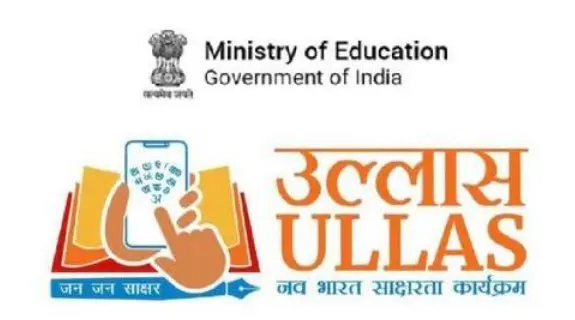
About the ULLAS Initiative
- Introduction
- The Understanding Lifelong Learning for All in Society (ULLAS) initiative aims to transform education and literacy nationwide.
- Objectives
- Bridging gaps in basic literacy and critical life skills.
- Providing basic education, digital and financial literacy, and critical life skills to individuals aged 15 and above who missed out on formal schooling.
- Fostering a learning ecosystem through volunteerism.
- Components Covered
- Imparting Foundational Literacy and Numeracy.
- Teaching Critical Life Skills, including financial literacy, digital literacy, healthcare awareness, child care, and family welfare.
- Developing Vocational Skills for local employment.
- Offering Basic Education, including preparatory, middle, and secondary stage equivalency.
- Providing Continuing Education, such as adult education courses in various fields like arts, sciences, technology, culture, and sports.
- Implementation
- The initiative leverages volunteerism to reach learners.
- It utilizes the ULLAS app, a user-friendly and interactive platform available on both Android and iOS devices.
- The app serves as a digital gateway for learners to access diverse learning resources through the DIKSHA portal of NCERT.
- It facilitates learner and volunteer registration through self-registration or surveyors.
Source: PIB
Shipra River
In News: An audit on the degradation of the Shipra River conducted by the Comptroller and Auditor General of India (CAG) revealed numerous significant findings.
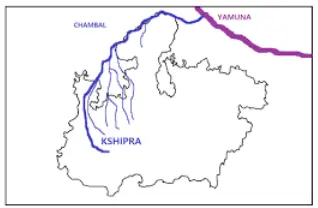
Overview of the Shipra River
- Location: The Shipra, also known as the Kshipra, flows through the state of Madhya Pradesh.
- Perennial River: It is a perennial river revered by Hindus as sacred as the Ganga River.
- Course
- Origin: The river originates in the Vindhya Range from a hill called Kakri-Tekdi, located 11km north of Dhar and near Ujjain.
- Length: It spans 195km in length, with 93km flowing through Ujjain.
- Route: It traverses the Malwa Plateau before merging with the Chambal River.
- Religious Significance
- Hindu Beliefs: According to Puranas, the Shipra is believed to have originated from the heart of Varaha, an incarnation of Lord Vishnu.
- Sage Sandipani's Ashram: Sage Sandipani's ashram, situated on the banks of the Shipra, is where Lord Krishna is said to have studied.
- Mention in Scriptures: The river is mentioned not only in Hindu texts but also in Buddhist and Jain scriptures.
- City of Ujjain: Ujjain, located on the right bank of the Shipra River, is a holy city associated with various religious events, including the Kumbha Mela, held once every 12 years on the river's ghats.
- Major Tributaries: The main tributaries of the Shipra River are the Khan and Gambhir rivers.
Source: IE
Rice Bran
In News: Recently, the Central Government issued an official notification through the Directorate General of Foreign Trade (DGFT), announcing a four-month extension to the ban on exports of de-oiled rice bran.
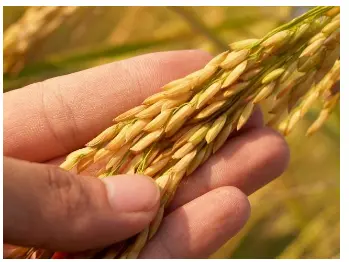
About Rice Bran
- Rice bran is a prominent byproduct in rice milling, obtained from the outer brown layer of brown rice during the milling process.
- Approximately 5−10 kg of bran is generated from 100 kg of paddy rice.
- The bran fraction contains around 14-18% oil, making it a significant source of rice bran oil.
- Rice bran oil is valued for its health benefits and is popular as a "healthy oil" in various regions, including Japan, Asia, and notably India.
- It is characterized by its pale yellow color, lack of odor, nutty flavor, and sweet taste.
- Rich in unsaturated fats, vitamin E, and other essential nutrients, rice bran oil offers nutritional advantages.
- The nutrient composition of rice bran varies depending on the rice variety and milling system efficiency.
- Primarily used as animal feed due to its oily nature, rice bran serves as an excellent binder in animal feed formulations.
- Consumption of rice bran has been associated with numerous health effects, including anti-diabetic, lipid-lowering, hypotensive, antioxidant, and anti-inflammatory properties.
- It may also impact cholesterol and calcium absorption, potentially aiding in managing cholesterol levels and preventing certain types of kidney stones.
Source: TP
T+0 Settlement
In News: SEBI recently sanctioned the introduction of the beta version of the T+0 settlement on an optional basis.
About T+0 Settlement
- T+0 settlement refers to the settlement of funds and securities for a transaction on the same day the trade was executed.
- Currently, the Indian securities markets operate on a T+1 settlement cycle, where settlement occurs on the next day after the trade.
- In 2002, the settlement period was reduced from T+5 to T+3, and further reduced to T+2 in 2003 by the regulator SEBI.
- The transition to T+1 settlement began in 2021 and was completed in January 2023.
- Now, T+0 settlement will be introduced alongside T+1 as an alternative settlement cycle.
- Advantages:
- Provides investors with instant receipt of funds and securities.
- Eliminates the risk of settlement shortages and offers greater control over funds and securities.
- Expected to reduce counterparty risk and increase market liquidity.
- Although not as common as T+1 or T+2, some countries and markets like the Moscow Exchange (MOEX), Korea Exchange (KRX), Taiwan Stock Exchange (TWSE), and Hong Kong Stock Exchange (HKEX) offer T+0 settlements for specific trades and transactions.
Source: MC
Bhutan’s opening move, its Gelephu gambit
In News: A recent article explores Bhutan's plan to create a regional economic center in Gelephu, a town adjacent to Assam in India. It discusses the project's importance as a risk for Bhutan but potentially game-changing for the area, especially with India's backing.
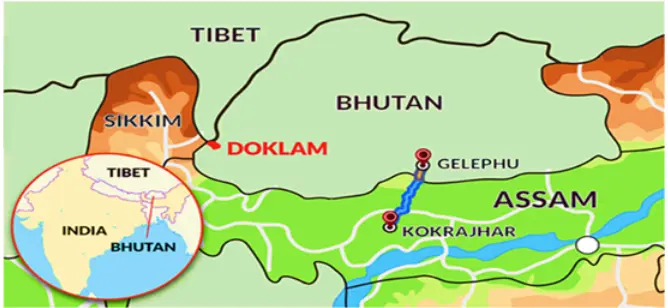
Debate Surrounding the Development of Gelephu Mindfulness City (GMC)
Arguments in Favor
- Carbon-Neutral City Concept
- Gelephu aspires to be a carbon-neutral city, housing non-polluting industries like IT, education, and healthcare.
- It aims to attract investment and position itself as a health and wellness hub, akin to planned cities like Neom and Nusantara.
- Strategic Connectivity
- Gelephu's location at the intersection of India's "Act East" policy and emerging connectivity plans to ASEAN and the Indo-Pacific region is significant.
- It aligns with initiatives like the India-Middle East-Europe Economic Corridor and Trilateral Highway, enhancing lateral land-based connectivity.
- Bilateral Benefits for Bhutan
- The project complements Bhutan's infrastructural goals and offers opportunities for future integration with initiatives like the India-Middle East-Europe Economic Corridor.
- It addresses challenges such as tourism expansion, youth employment, and geopolitical pressures, including negotiations with China.
Arguments Against
- Geographical Challenges
- Gelephu's unique geography presents obstacles, including high rainfall and flooding during monsoon seasons.
- Wildlife corridors and landlocked status pose further challenges for infrastructure development and trade.
- Security Concerns
- Historical insurgencies in neighboring northeastern states and Myanmar raise security concerns.
- Past military operations, like Operation All Clear, highlight potential risks to stability.
Significance of the Gelephu Project
- Bhutan's Socio-Economic Objectives
- Promoting tourism and employment opportunities are vital aspects of Bhutan's development strategy.
- Gelephu serves as a potential solution to address geopolitical pressures while fostering controlled international engagement.
- India's Role and Regional Cooperation
- India's support for the Gelephu project strengthens bilateral ties and regional connectivity.
- It aligns with India's infrastructure plans and energy cooperation initiatives, facilitating mutual benefits.
Recommendations for Strengthening Regional Ties
- Seeking Common Ground
- India should prioritize regional cooperation, acknowledging shared cultural, geographical, and economic ties.
- Examples from successful engagements with Sri Lanka and Bangladesh offer valuable lessons for fostering goodwill.
- Promoting Digital Infrastructure
- Collaboration on digital infrastructure and STEM initiatives can enhance economic integration and educational opportunities across South Asia.
- Projects like the Third International Internet Gateway demonstrate the potential for broader regional cooperation.
- Environmental Sustainability
- India and Bhutan must prioritize environmental sustainability in bilateral relations.
- Cooperation in preserving natural resources and promoting sustainable development is essential for long-term prosperity.
Conclusion
Bhutan's vision for the Gelephu Mindfulness City epitomizes its aspirations for sustainable growth and connectivity. Despite challenges, the project underscores the deep-rooted ties between India and Bhutan and their shared commitment to regional progress. Through strategic cooperation and sustained efforts, both nations can navigate complex dynamics and achieve mutual prosperity in the region.
Source: TH
Share the article
Edukemy’s Current Affairs Quiz is published with multiple choice questions for UPSC exams
MCQ
Get Latest Updates on Offers, Event dates, and free Mentorship sessions.

Get in touch with our Expert Academic Counsellors 👋
FAQs
UPSC Daily Current Affairs focuses on learning current events on a daily basis. An aspirant needs to study regular and updated information about current events, news, and relevant topics that are important for UPSC aspirants. It covers national and international affairs, government policies, socio-economic issues, science and technology advancements, and more.
UPSC Daily Current Affairs provides aspirants with a concise and comprehensive overview of the latest happenings and developments across various fields. It helps aspirants stay updated with current affairs and provides them with valuable insights and analysis, which are essential for answering questions in the UPSC examinations. It enhances their knowledge, analytical skills, and ability to connect current affairs with the UPSC syllabus.
UPSC Daily Current Affairs covers a wide range of topics, including politics, economics, science and technology, environment, social issues, governance, international relations, and more. It offers news summaries, in-depth analyses, editorials, opinion pieces, and relevant study materials. It also provides practice questions and quizzes to help aspirants test their understanding of current affairs.
Edukemy's UPSC Daily Current Affairs can be accessed through:
- UPSC Daily Current Affairs can be accessed through Current Affairs tab at the top of the Main Page of Edukemy.
- Edukemy Mobile app: The Daily Current Affairs can also be access through Edukemy Mobile App.
- Social media: Follow Edukemy’s official social media accounts or pages that provide UPSC Daily Current Affairs updates, including Facebook, Twitter, or Telegram channels.

